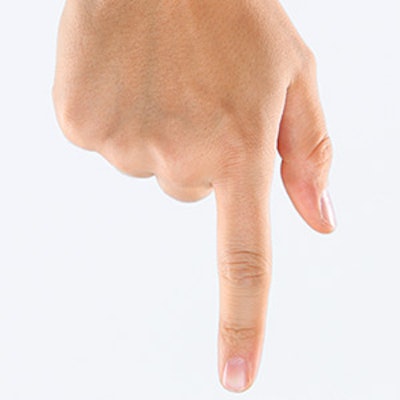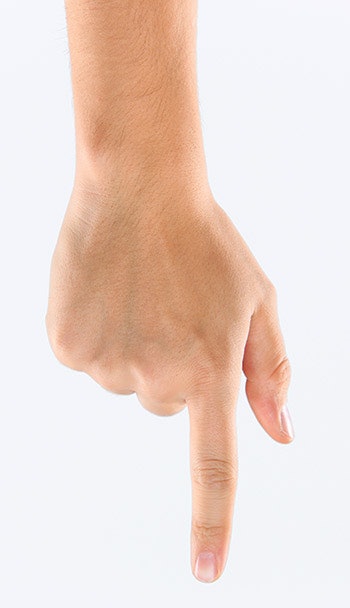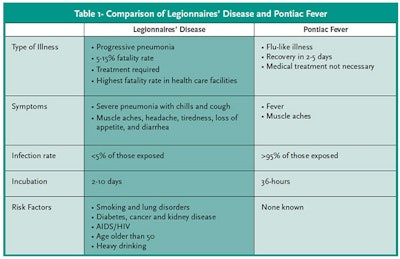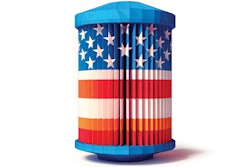

2017 saw a rash of Legionella outbreaks at public swimming pools and spas. In July, three members of a Gold's Gym in Kennewick, Wash., fell ill with Legionnaire's disease, a type of pneumonia caused by Legionella bacteria. In May, the community pool and spa at Foothill Ranch in Lake Forest, Calif., closed after two guests contracted Legionnaire's disease. Even the pool at the famed Graceland hotel saw a Legionella outbreak, resulting in nine people getting sick, one of whom passed away.
These cases serve as a weighty reminder for industry professionals who maintain residential and commercial pools and spas to remain vigilant when maintaining water health.
Below, we share more about Legionella, including what it is, what causes it and how to prevent it before it strikes.
BACKGROUND
Legionellosis is an infection caused by the bacterium Legionella. There are at least 46 species and 70 subgroups (serogroups). Approximately half of the species may cause human disease, but approximately 90 percent of all infections are caused by one species: Legionella pneumophila.
The bacterium was named Legionella pneumophila after a 1976 outbreak at an American Legion convention in Philadelphia. Just days after the convention ended, dozens of attendees developed serious pneumonia that did not respond to conventional medical treatment, leaving doctors confounded. In total, about 250 cases disease were identified, and 34 people died.
Initially, it was unclear whether the pneumonia was caused by infection or chemical poisoning. After an extensive investigation, the illness was traced to previously-unknown bacteria that were found growing in the HVAC system at one of the convention hotels.
Legionellosis is not spread by person-to-person contact; it is caused by inhaling airborne droplets of water containing Legionella bacteria. The diagnosis of Legionellosis requires specialized tests not routinely performed on persons with pneumonia or fever.
Legionellosis can occur in two forms. The most serious form is Legionnaires' disease.
Legionnaires' disease is a severe form of pneumonia and can be fatal, especially to smokers and individuals with weakened immune systems. The second form is known as Pontiac Fever, a milder infection with symptoms similar to the flu. Individuals recover quickly from Pontiac Fever and do not usually require medical treatment.
WHERE DOES IT COME FROM?
Research has found Legionella bacteria are widespread in nature; more than 40 percent of all fresh waters contain Legionella bacteria. The bacteria most likely enter man-made systems, such as HVAC systems, water heaters and spas, via the fill water.
RELATED: Ozone Mixing Key to Disinfection
Legionella bacteria have a special lifestyle and unique nutritional requirements. For example, the bacteria grow only when other microorganisms are present, as they supply nutrients for the Legionella. Most of the time, Legionella bacteria live as parasites inside of protozoa, especially amoeba. Sometimes Legionella grow as small colonies inside biofilm with other bacteria and fungi. Periodically, some Legionella break out of the protozoa or the biofi lm and randomly swim in the water. It is these free-swimming Legionella cells that can cause Legionellosis.
Legionella are found only in wet locations and die when their environment dries out. They grow slowly at temperatures below 61 degrees Fahrenheit, but thrive when the temperature is between 90 and 106 degrees Fahrenheit, making hot tubs an especially hospitable environment.
Operating conditions inside cooling towers, humidifiers, domestic hot water systems and spas are similar to the wet, natural habitat of Legionella.
Systems that are not properly maintained can develop biofilm, which creates an environment where Legionella can grow and multiply into large colonies. If this happens, cooling towers, humidifi ers and showers may then broadcast fine droplets of Legionella-filled water into the air. If inhaled, the droplets enter the lungs, where they invade white blood cells and produce Legionellosis.
WHERE IT STRIKES
The U.S. Centers for Disease Control and Prevention estimates that there are between 8,000 and 18,000 cases of Legionellosis in the U.S. every year. Public health officials estimate that less than 10 percent of all cases are reported. The overall fatality rate is between 10 and 15 percent.
The majority of Legionellosis infections are caused by accidental contact with the bacteria in natural bodies of water such as lakes or rivers. The second-largest source of infection is health care facilities such as hospitals and nursing homes — these infections have a higher fatality rate, as high as 50 percent, which is not surprising in that those in such facilities often have people with underlying health issues and weakened immune systems. Engineered water systems, such as cooling towers and humidifiers, are the major source of infections in these settings.
A small number of cases have been traced to showers and spas. In spas, Legionella become trapped in the bubbles from aeration. When the bubbles break the surface, they burst and release fine droplets that contain the bacteria, which are then inhaled and cause infection.
It is likely that the majority of infections from contaminated spas are Pontiac Fever, the less severe form of Legionellosis. Legionella bacteria have not been found in spas that are properly maintained. Swimming pools have not been linked with outbreaks.


CASE STUDIES
The following well-publicized cases are typical Legionellosis outbreaks from spas. According to CDC Surveillance Summary data, outbreaks of this type continue to occur as a result of inadequate sanitation.
CASE 1. In 1994, an outbreak occurred on a cruise ship sailing between New York City and Bermuda. A clinical investigation of the infected passengers confirmed 14 cases, including one fatality. The investigation that followed found the ship's spa was the source of the outbreak — in particular, the spa's sand filter, which was infested with microorganisms including Legionella pneumophila. The infestation developed because the sanitizer concentration had not been properly maintained.
Further investigation indicated that at least 28 passengers on nine previous cruises had also developed Legionellosis.
Note: After this outbreak, the CDC developed operational guidelines for spas on cruise ships.
CASE 2. In 1996, an outbreak of 23 cases and two deaths was reported in Virginia. Twenty-two of the individuals required hospitalization. The mean age of the victims was 65. A clinical investigation traced the cases to a large home-improvement center, and DNA evidence traced the bacteria to a display spa in the store. The spa had been filled with drinking water but was never treated with a sanitizer. All patients reported being in the vicinity of the spa.
RELATED: Attack The Spa's Biofilm Sanctuaries
What's especially interesting is how little time it took for the patients to become infected. The average store visit among the patients was 79 minutes. Several patients spent 10 minutes near the spa display, while four merely walked by the spa display before becoming infected.
CASE 3. In 1999, a total of 188 cases of Legionnaires' disease and 15 deaths were reported in the Netherlands during an outbreak that occurred at a large flower and consumer show. Public health authorities began an extensive investigation after receiving reports of numerous cases of severe pneumonia. Although several possible water handling systems were involved, the evidence implicated a display spa, which was filled with water and held at 99 degrees Fahrenheit for four days prior to the show. The spa was never treated with a sanitizer.
HOW DO YOU CONTROL IT?
Legionella bacteria are easily controlled if adequate sanitizer concentration is maintained at all times. No outbreaks have occurred when the water in the spa is properly maintained. Legionella and many other bacteria can quickly develop into very large colonies if the disinfectant/sanitizer level is not sufficient. This is especially true in spas, because the organic load from bathers (body oils, perspiration, urine, feces and cosmetics) provides a high concentration of nutrients for microorganisms. The warm temperature coupled with organic load allows microorganisms to develop large colonies rapidly.
The U.S. Environmental Protection Agency regulates products that control bacteria in swimming pools and spas. Those products registered by the EPA as disinfectants/sanitizers have been proven to adequately control bacteria in swimming pools and spas. A number of treatments are sold that claim to control bacteria but that have not been registered by the EPA, and the ability of these products to control bacteria has not been independently verified. Therefore, these products may not provide the necessary control of disease-causing bacteria.
APSP recommends that all spa and portable hot tub operators:
- Use an EPA-registered disinfectant/sanitizer. The product label will use one of these two words.
- Follow the label directions.
- Maintain the concentration of the disinfectant/sanitizer specified on the label at all times.
- Maintain the pH between 7.2 and 7.8.
- Perform regular oxidation and water replacement.
- Frequently replace water in heavily-used spas and commercial spas.
- Replace water and clean lightly used residential spas every three months.
If an outbreak is confirmed or suspected, the spa must be decontaminated at once.
- Close the spa immediately.
- Turn off the blowers.
- If the spa is indoors, make certain that air for the spa room does not circulate into the rest of the facility through the HVAC system.
- Replace the filter cartridges or filter media.
- Chemically clean the filter housing and all accessible areas. Disinfecting bathroom cleaners are suitable for most spas. The area should be rinsed with tap water and the rinse water discarded before the spa is refilled.
- Decontaminate the spa. For more on this, see our previous story on proper decontamination procedures: aqmag.co/decontamination







































